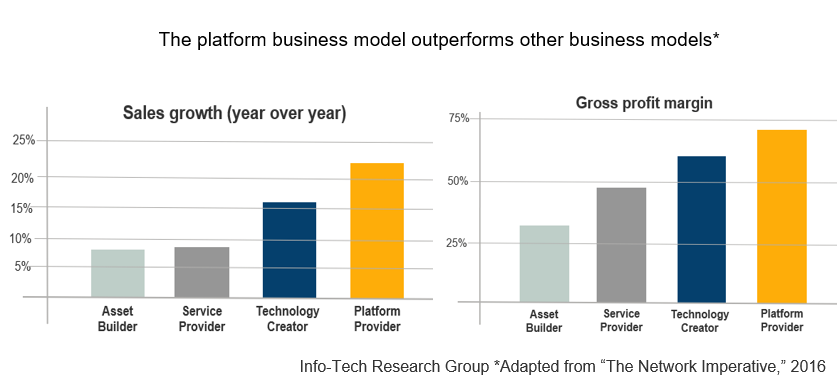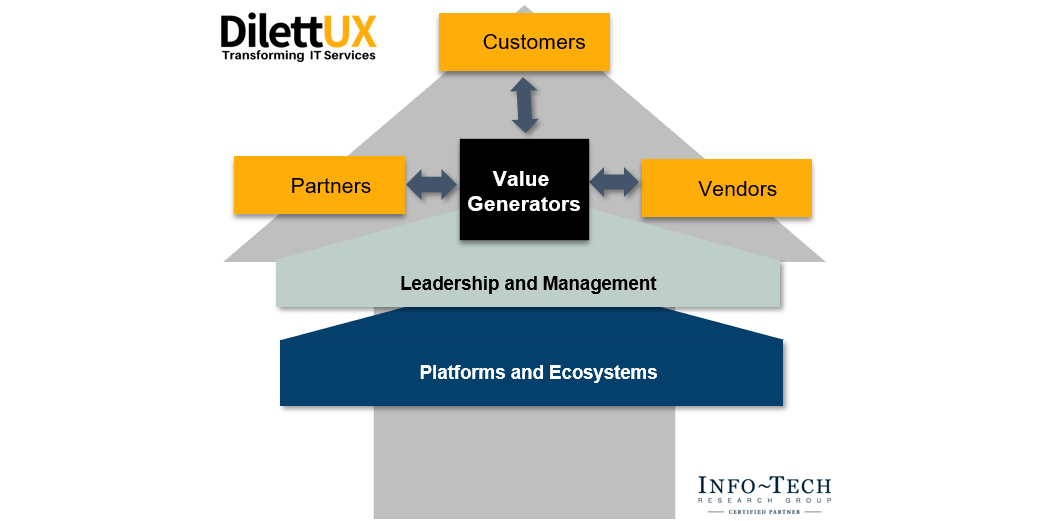Introduction
Traditionally market squares, shopping centers and neighborhood stores; among others, have been the scenarios where producers and consumers have interacted to exchange goods and services, although with a very limited generation of value, due to the high costs of production, distribution and sales implicit in this form of interaction.
These scenarios have evolved very quickly in digital platforms that allow producers and consumers to interact, generating more and more value between them. This value is translated, not only in the enormous scope and coverage that these have, but in the great speed and efficiency of the interactions that take place between the parties; generating mutual benefits, including increased sales, cost reduction, product and service differentiation, process optimization and cultural transformation; through disruptive business models.
On the other hand, the technologies of the fourth revolution on which digital platforms are supported are increasingly available and at affordable prices, significantly reducing the opportunity gap between large and small companies:
Large companies, with consolidated products in the market, have the possibility of transforming and evolving the concept of a platform, with the opportunity to promote an immense variety of interactions with their customers and with the ability to create a community with them, involving them early from the idea of new products and services, joint creation; up to their continuous improvement; even leading companies to discover new business models.
For their part, small and medium-sized companies, in addition to the benefits mentioned above, have the great opportunity to gain participation in a globalized market, and to scale at great speed, at marginal costs.
In both cases, the key success factor is not in the technology that we use, but mainly in the design that is achieved of the platform, through the establishment of a virtuous circle of self-regulated feedback, where the growth of the same and quality control is being conducted by the community itself, and the value generated by the interactions between the parties ensures greater consumption, and therefore greater production; and vice versa.

Visualizing a Platform
To be able to discuss platforms, we should be able to visualize them. We visualize a platform by breaking it down into layers and components that encapsulate the stakeholders and technologies that make up the platform ecosystem.
Stakeholders: Every person and every entity that engages with and contributes to the interaction on the platform – this can be customers, vendors, partners, etc.
Channels and integrations: Every possible medium/channel/mode through which stakeholders will interact and/or integrate with the platform.
Value generators: Interaction is a vital part of a platform, and a platform’s goal is to increase interaction and engagement of stakeholders. The best way to do that is to understand the benefits and motivations that increase interaction.
Strategies: This is the management and governance layer, where all the strategies are formulated and executed. Some organizations are complex entities and require careful attention to not only strategies but also organization, structure, alignment, and culture.
Enabling platforms: Digital technology enables digital organizations to execute their strategies – this is a vital and integral part of a Platform. It also includes Agile and DevOps practices for efficient execution and delivery of technology solutions.
Core principles to build it
Building a succesful platform strategy requires to be based on the following core principles:
Customer-centricity: Digital enterprise is driven by customer focus, meeting and exceeding customer expectations. It must design its services with a “digital first” principle, providing access through every expected channel and including seamless integration and interoperability with other partners and vendors. It also means creating trust in its ability to provide secure services and to keep privacy and ethics as core pillars.
Leadership, management, and strategies: Digital leadership brings customer focus to the enterprise and its structures and organizes efficient networks and ecosystems. Accomplishing this means getting rid of silos and a siloed mentality and aligning on digital vision to design policies and services that are efficient and cost-effective while providing maximum benefit to the user. Asset sharing, co-creation, and being open and transparent become cornerstones of a digital enterprise.
Infrastructure: Providing digital services across demographics and geographies requires infrastructure, and that in turn requires long-term vision, smart investments, and partnerships with private industries to create the necessary foundational infrastructure upon which to build digital services.
Digitization and automation: Automation and digitization of processes and services, as well as creating digital-first products, lead to increased efficiency and reach of the enterprise across demographics and geographies. Moreover, by taking a digital-first approach, organizations future-proof their services and demonstrate their commitment to stakeholders.
Enabling platforms: Digital-native enterprises platforms must embrace open standards, designing and developing platforms and ecosystems with a cloud-first mindset and sound API strategies. Developer experience must also take center stage; providing the necessary tools and embracing Agile and DevOps practices and culture become prerequisites. Cybersecurity and privacy are central to the digital platforms, hence they must be part of the design and development principles and practices.
Organizational and Customers benefits
Through implementing a digital platform strategy, a enterprise is able to get the following benefits:
- Cost reductions due to open enterprise strategies
- Better integration and interoperability of data and services
- Agility and efficiencies across the enterprise
- Better customer engagement and increased satisfaction
- Increased collaboration and cooperation between stakeholders
- Increased opportunities for innovation through open data and open APIs
On the other hand the customers will benefit of:
- Better, more efficient, and automated services result in time and cost savings
- Better user experiences because of consistent, seamless services
- Better understanding of service availability and accessibility
- Better and quicker access to information and data
- Digital inclusiveness: providing equal opportunities for all customers regardless of demographics or geographies
Conclusions
To remain relevant in times when disruption is around the corner, enterprises will need to think like digital native enterprises and embrace platform thinking. Moreover, they need to build platforms that enable speed, agility, and easy access to real-time data for analysis and decision making.
References:
The Business of Platforms: Strategy in the Age of Digital Competition, Innovation, and Power by Michael A. Cusumano, Annabelle Gawer and David B. Yoffie
Info-Tech Research Group. Drive digital transformation with platform strategies, 2019 – Arif Mustafa, Director Research, CIO Advisory
Platform Revolution: How networked markets are transforming the economy – and how to make them work for you by Geoffrey G. Parker, Marshall W. Van Alstyne, and Sanger Paul Choudary.


